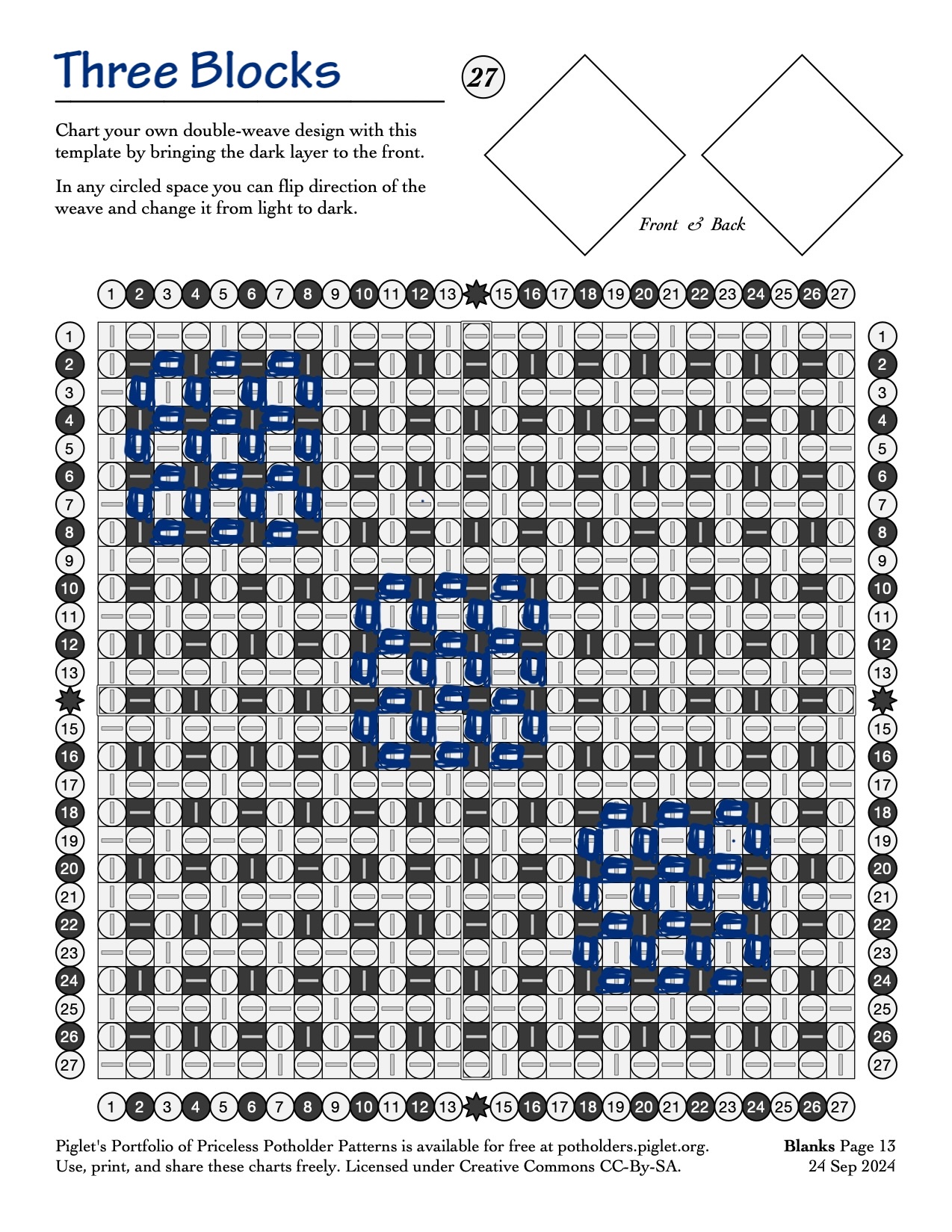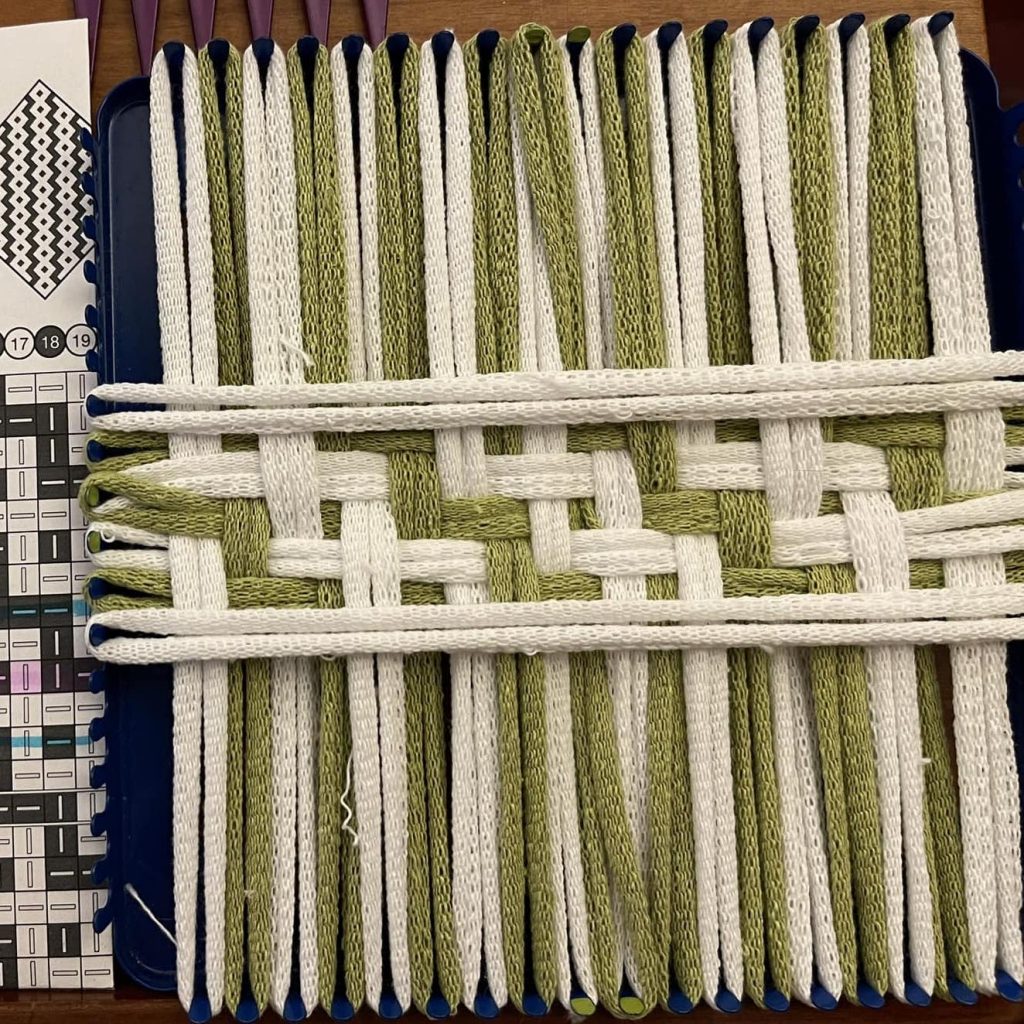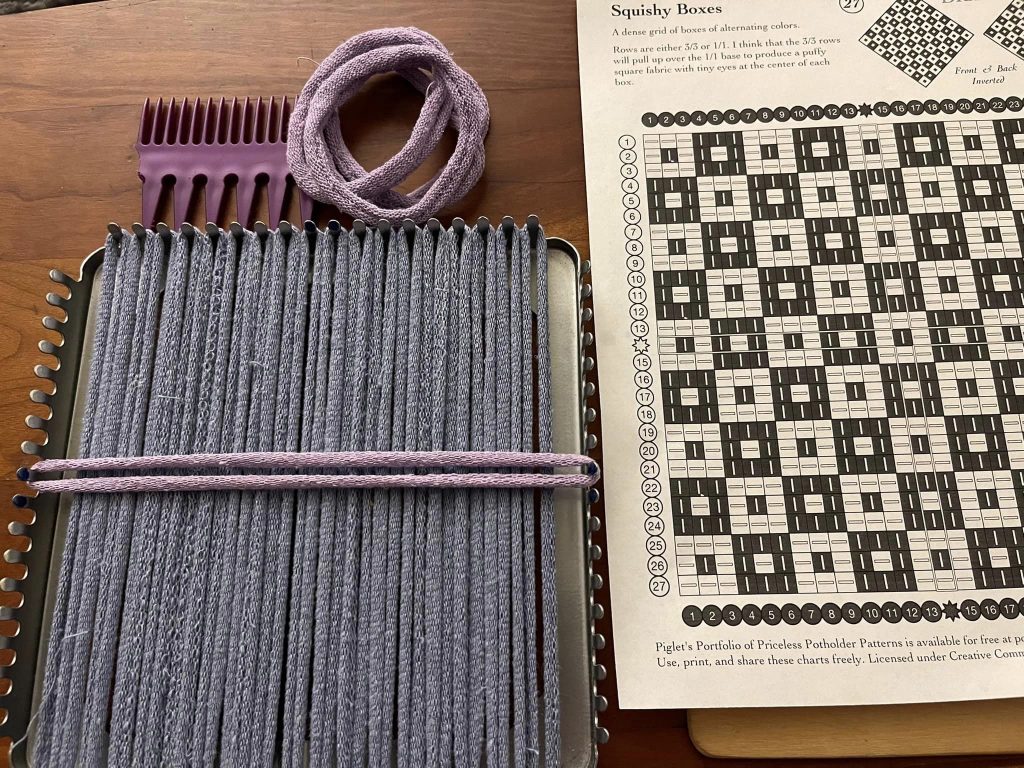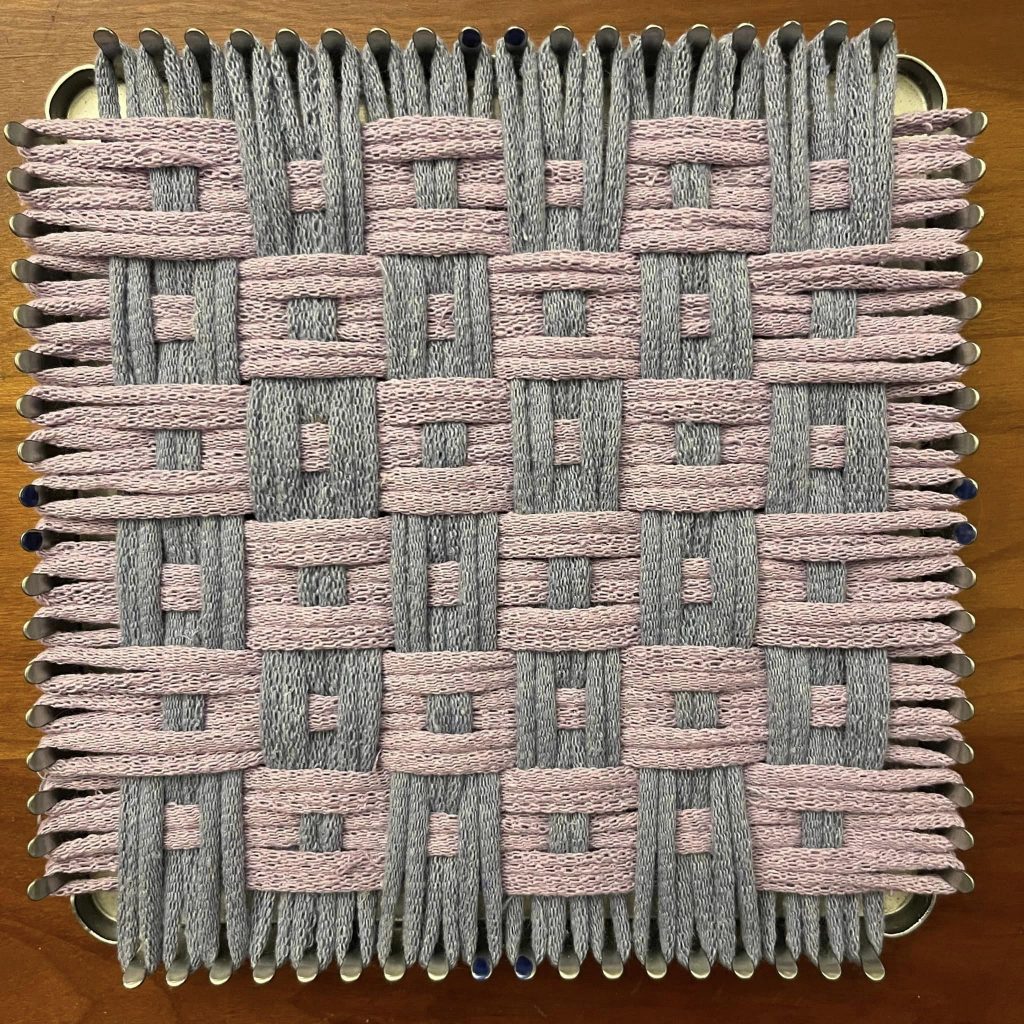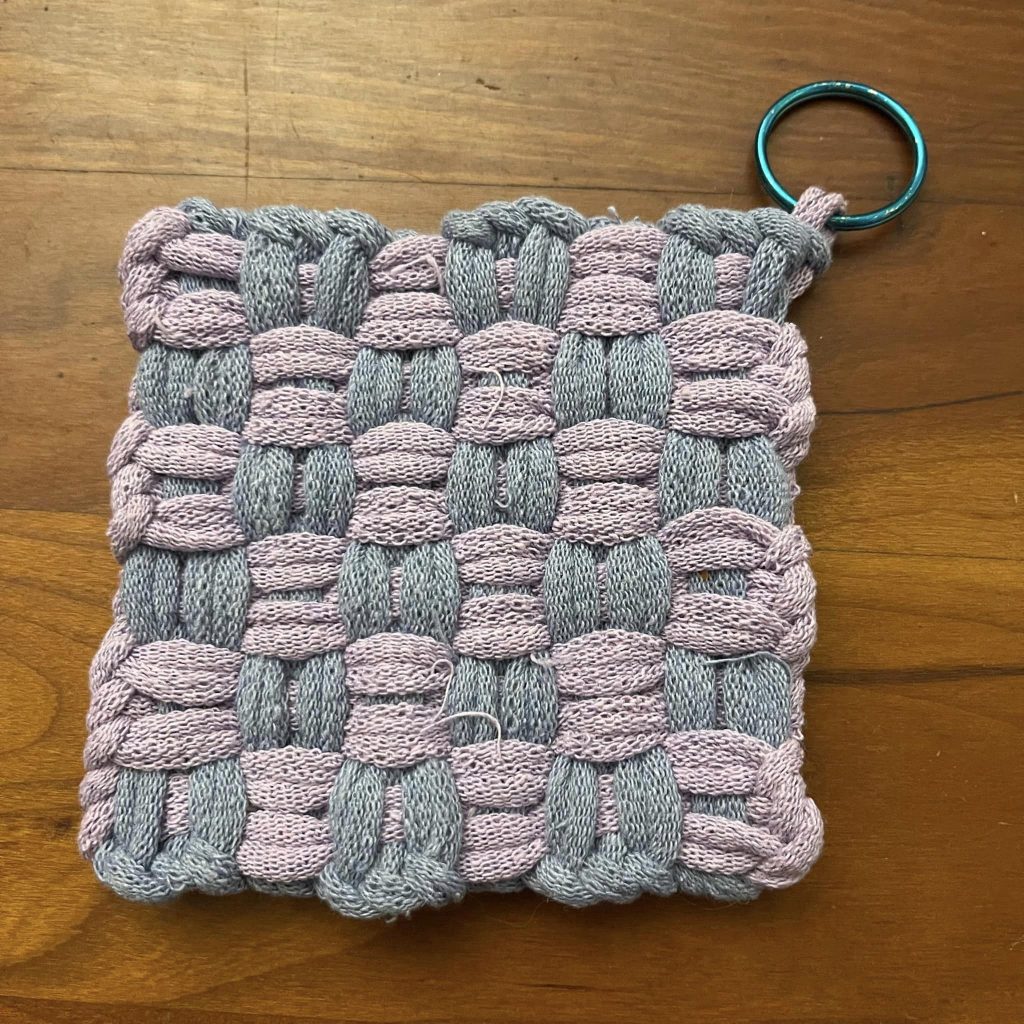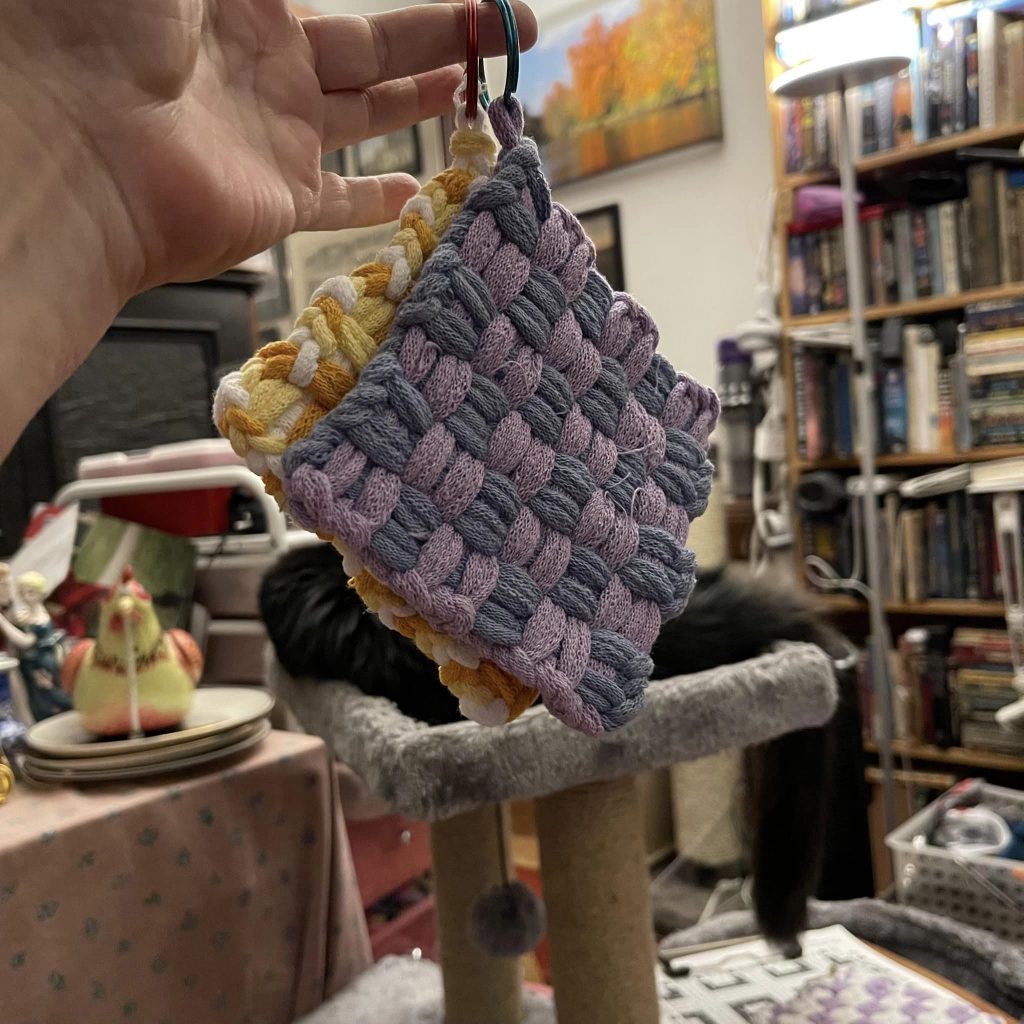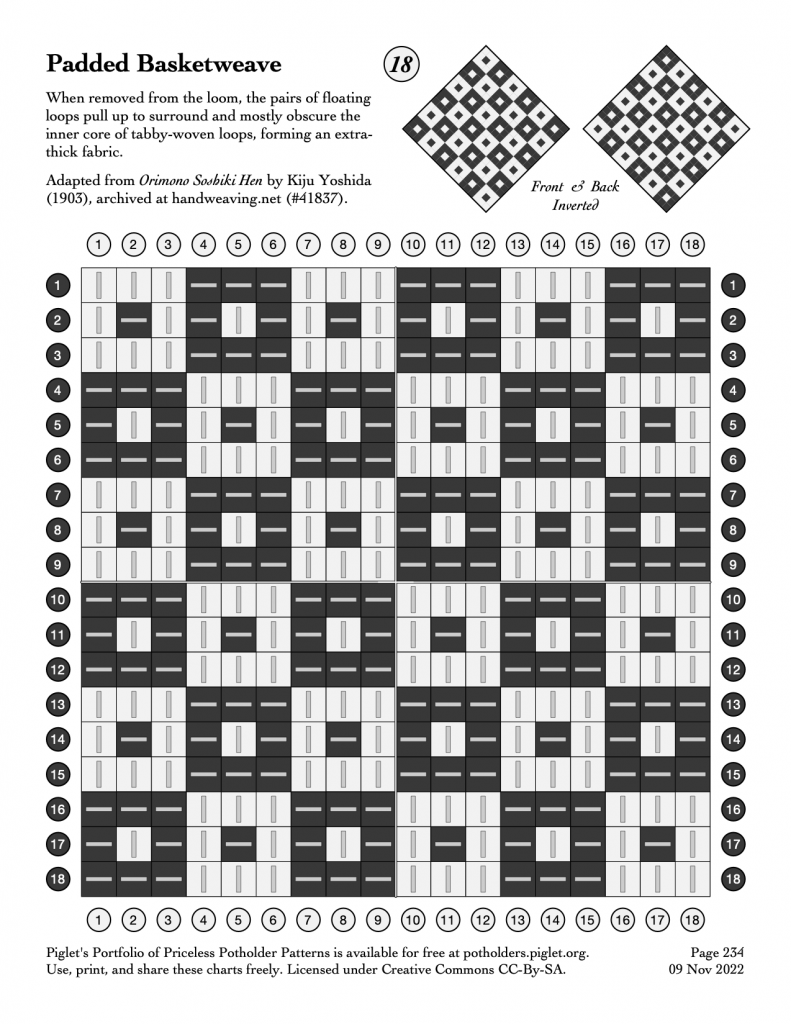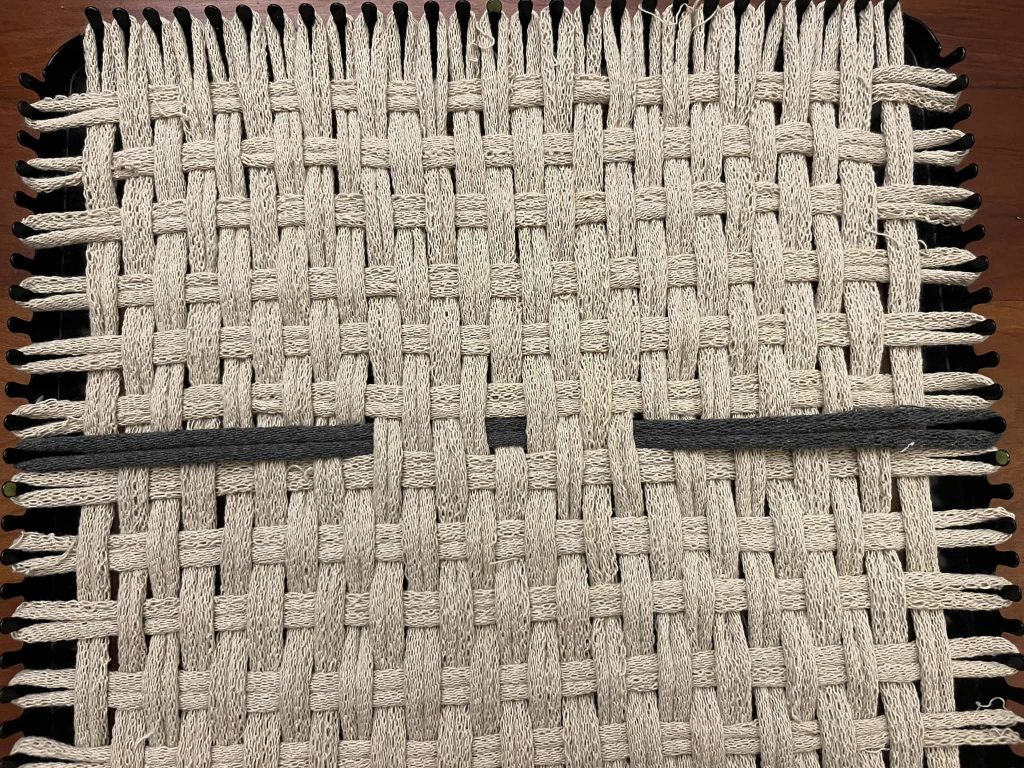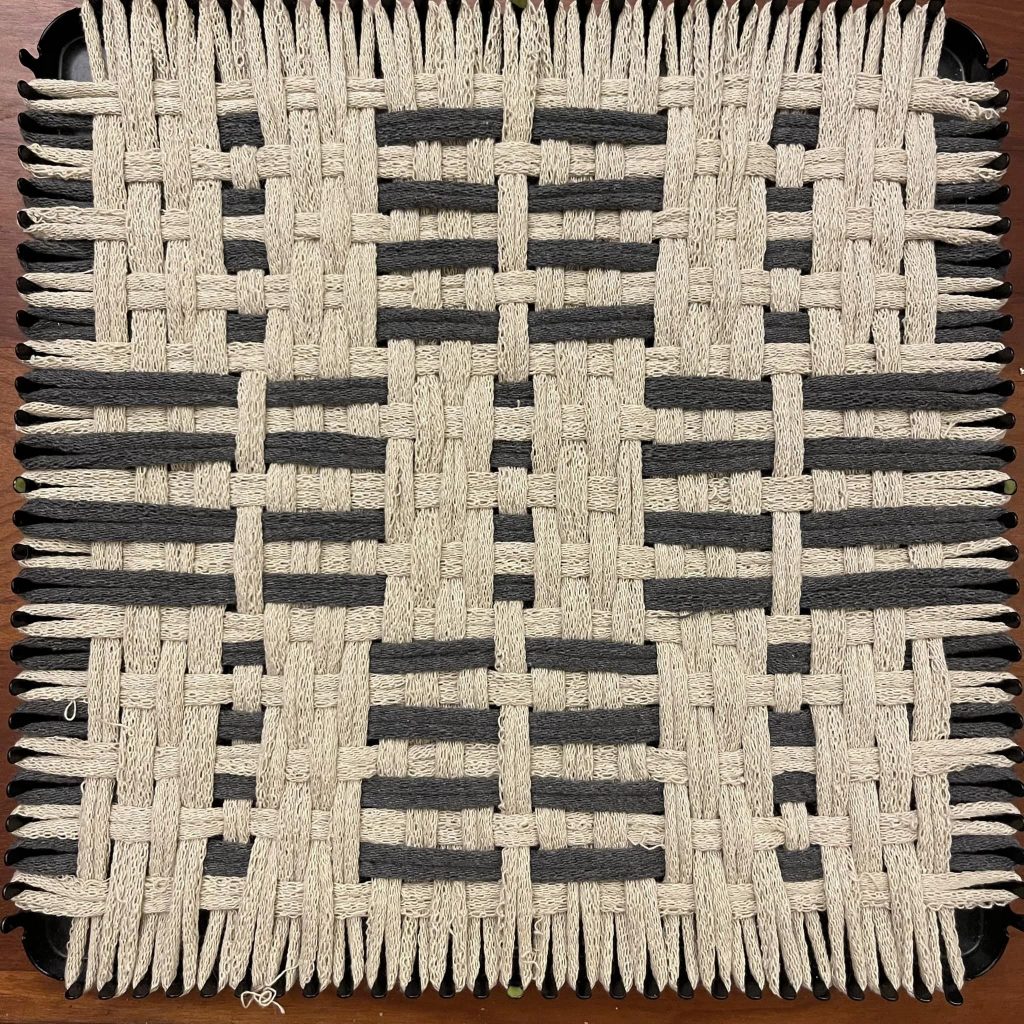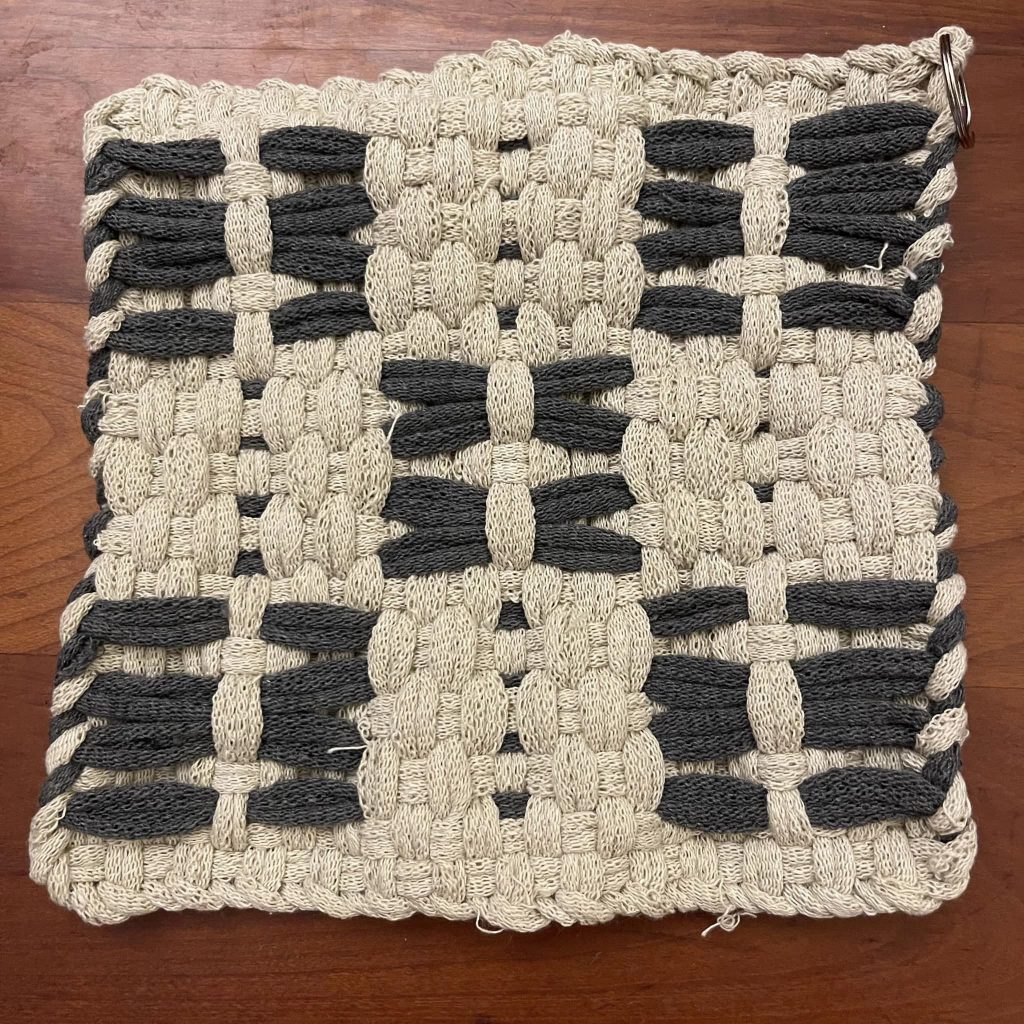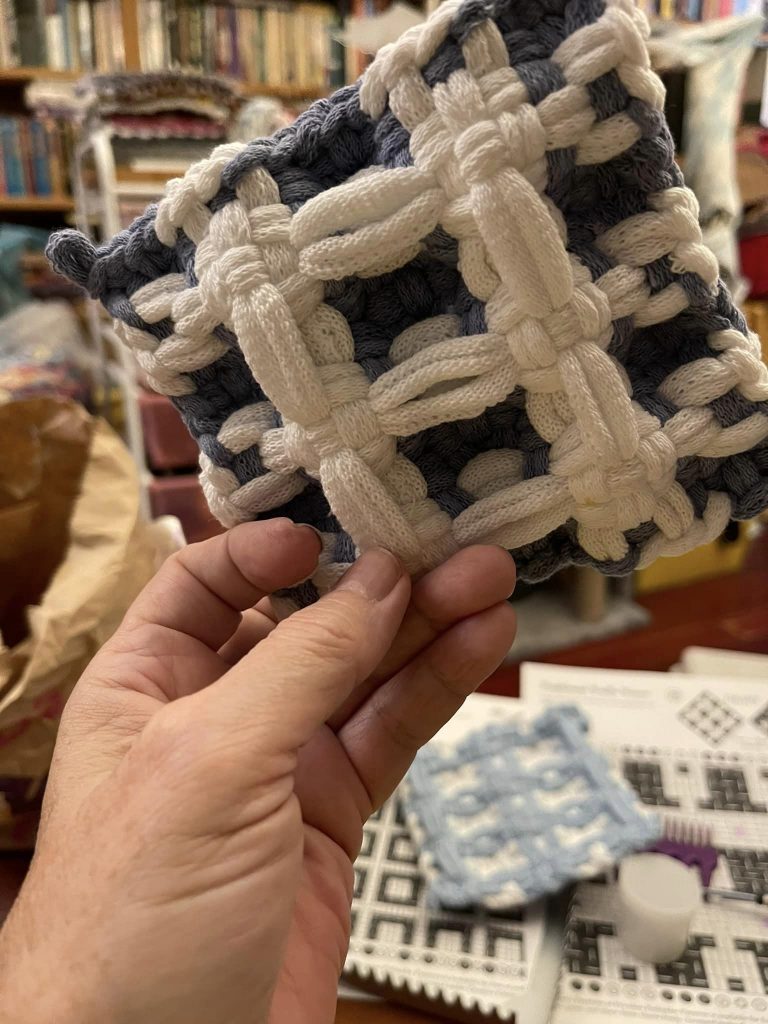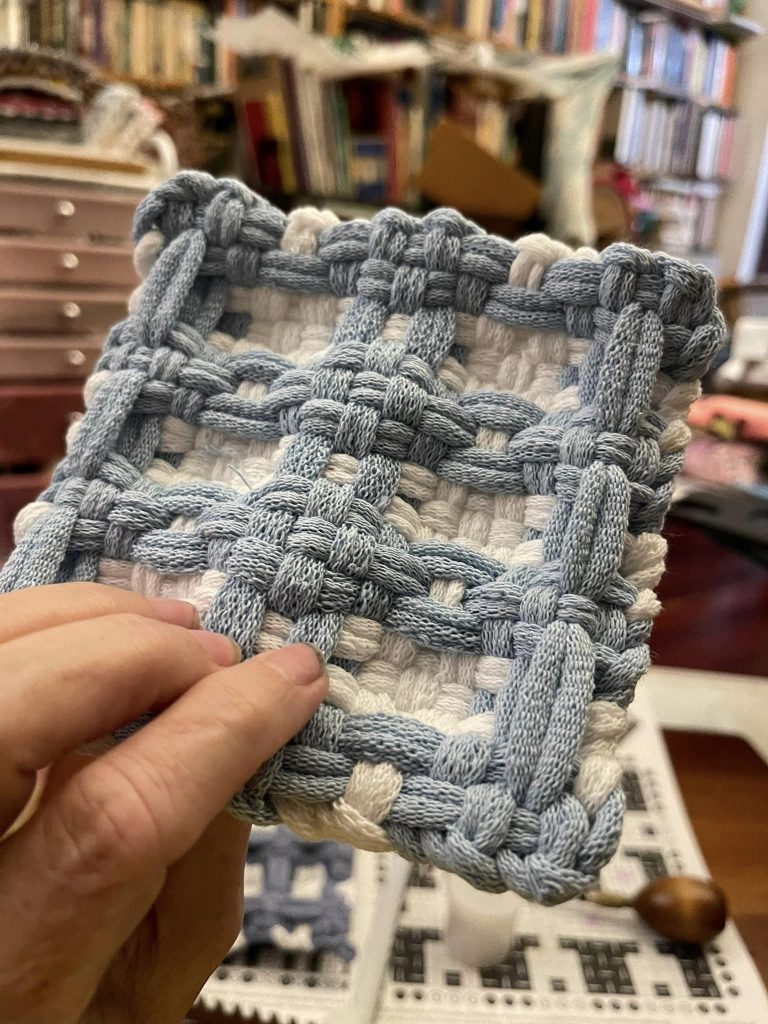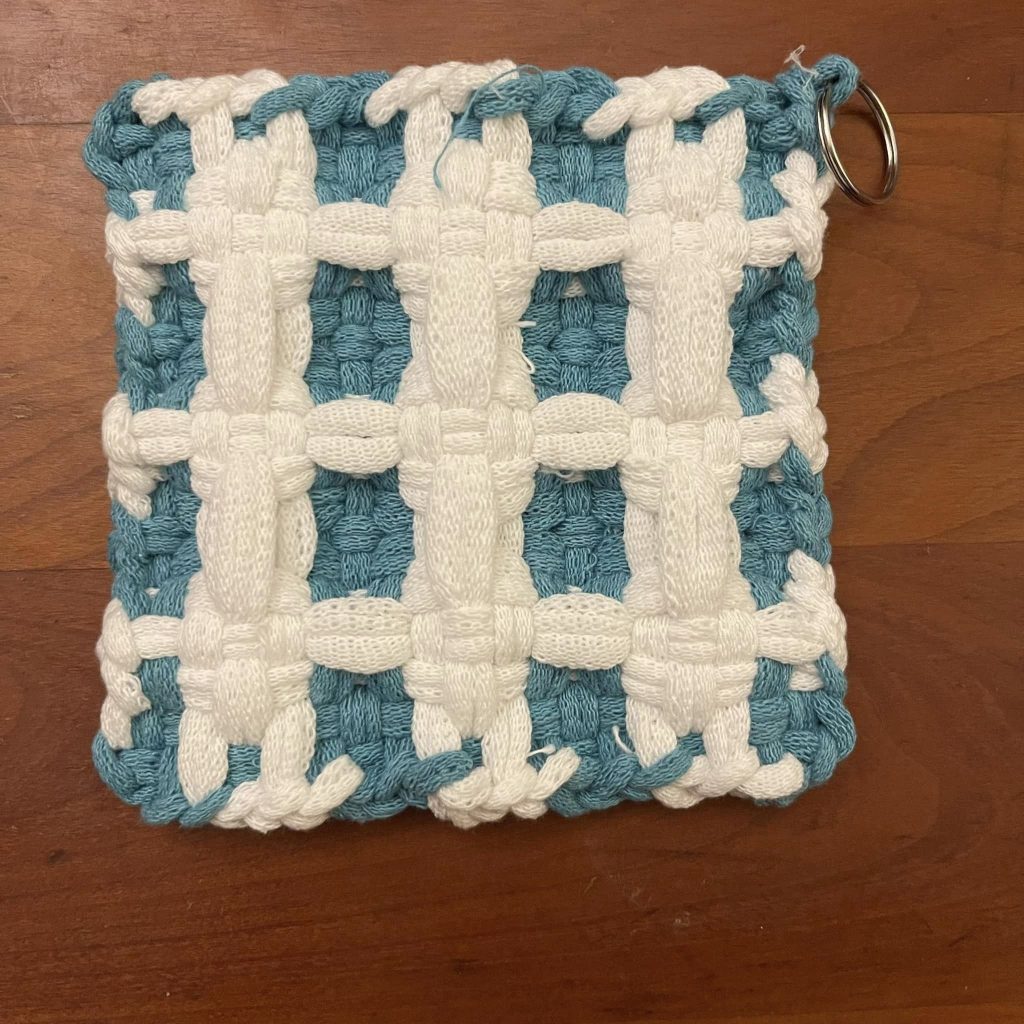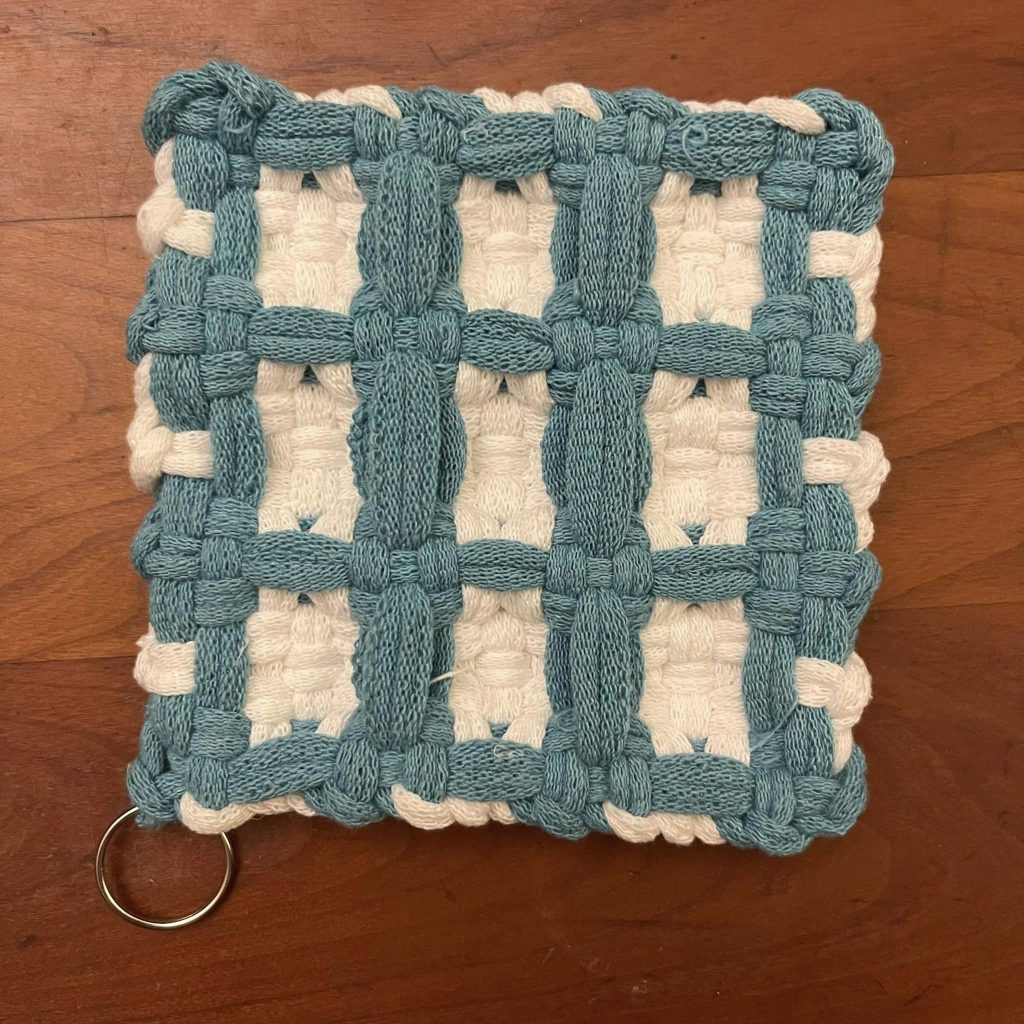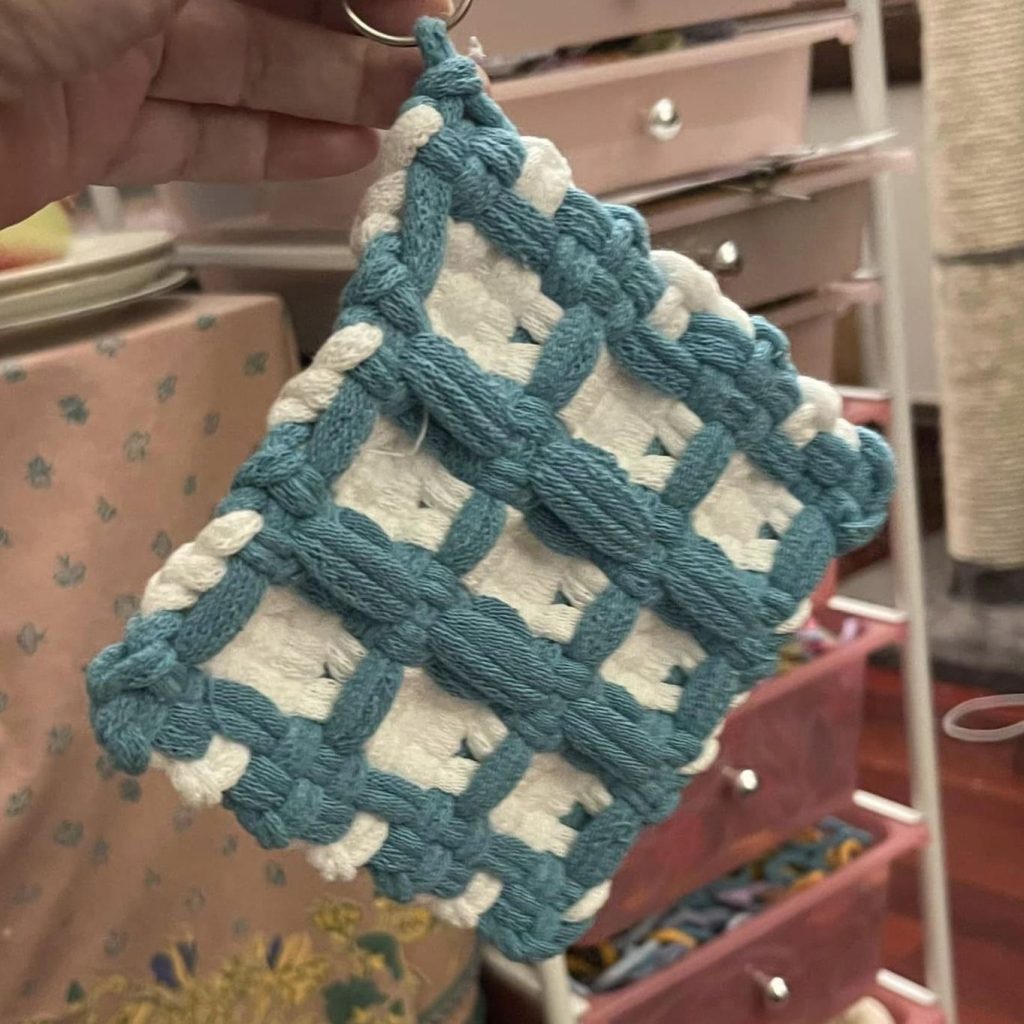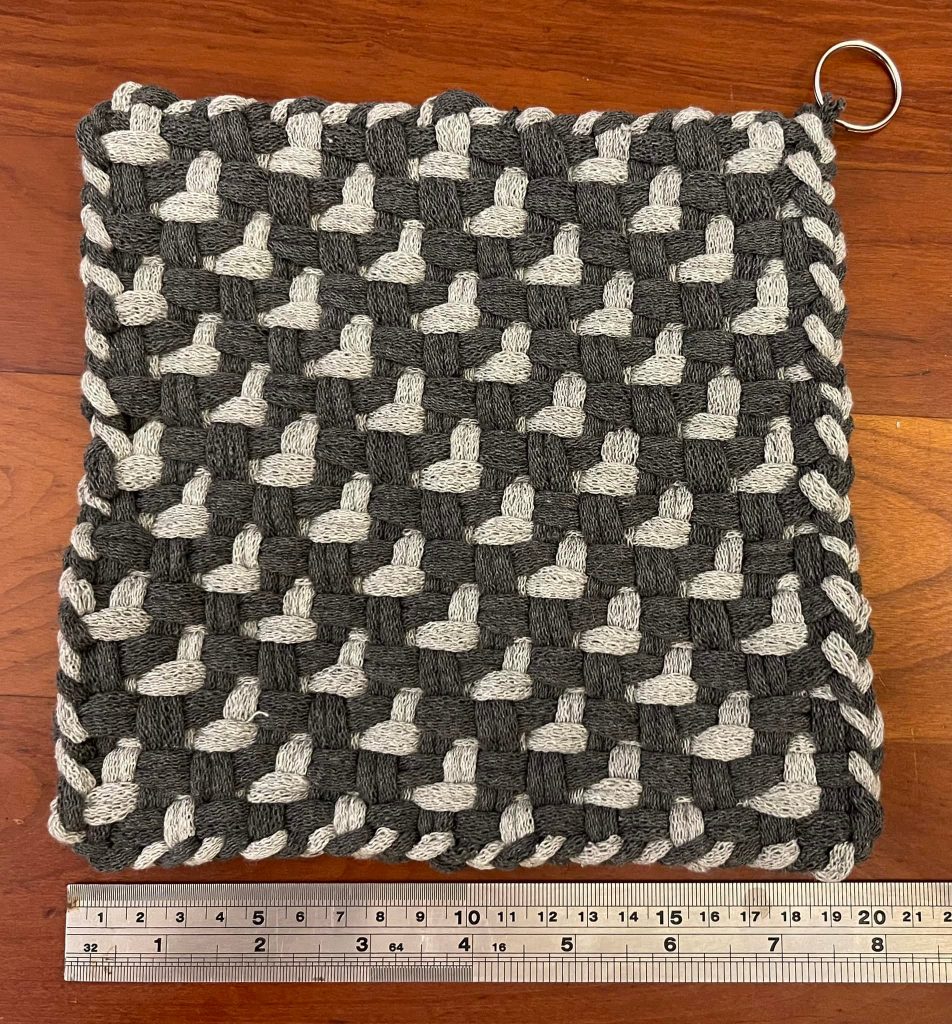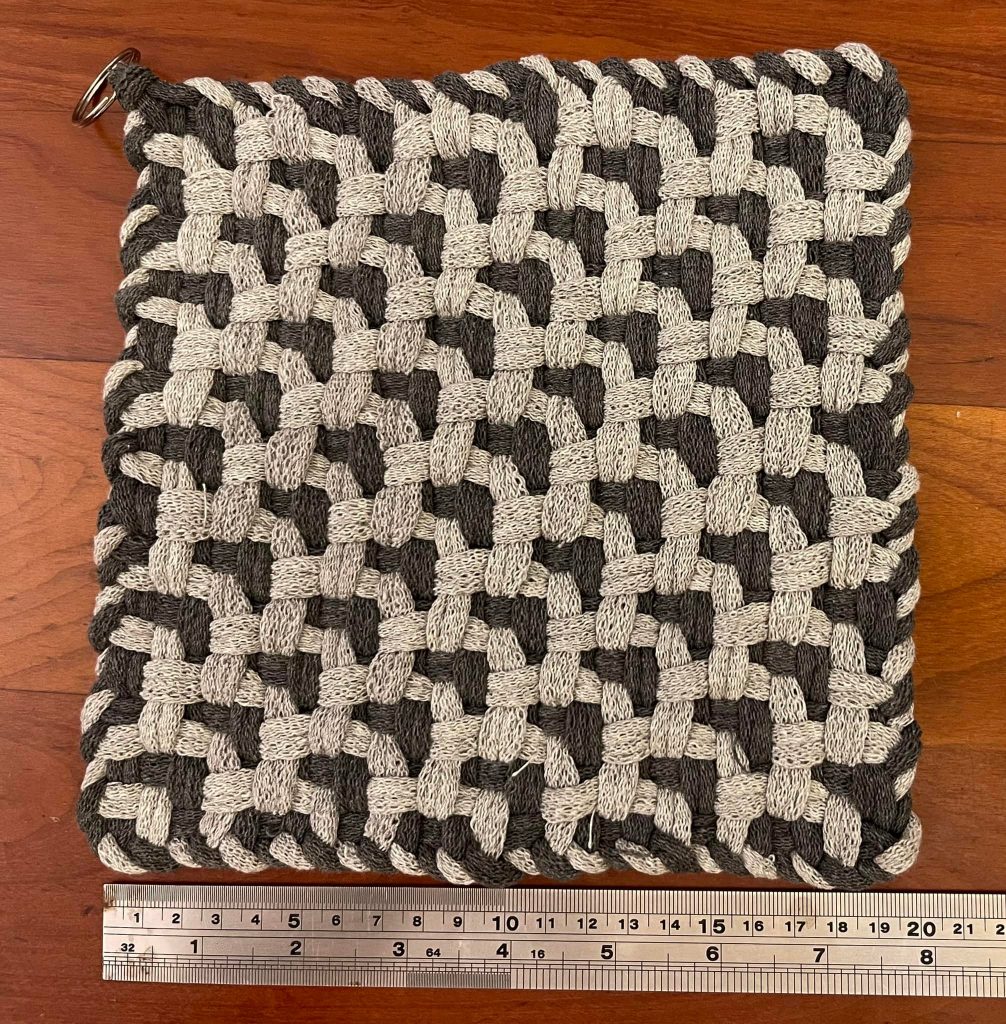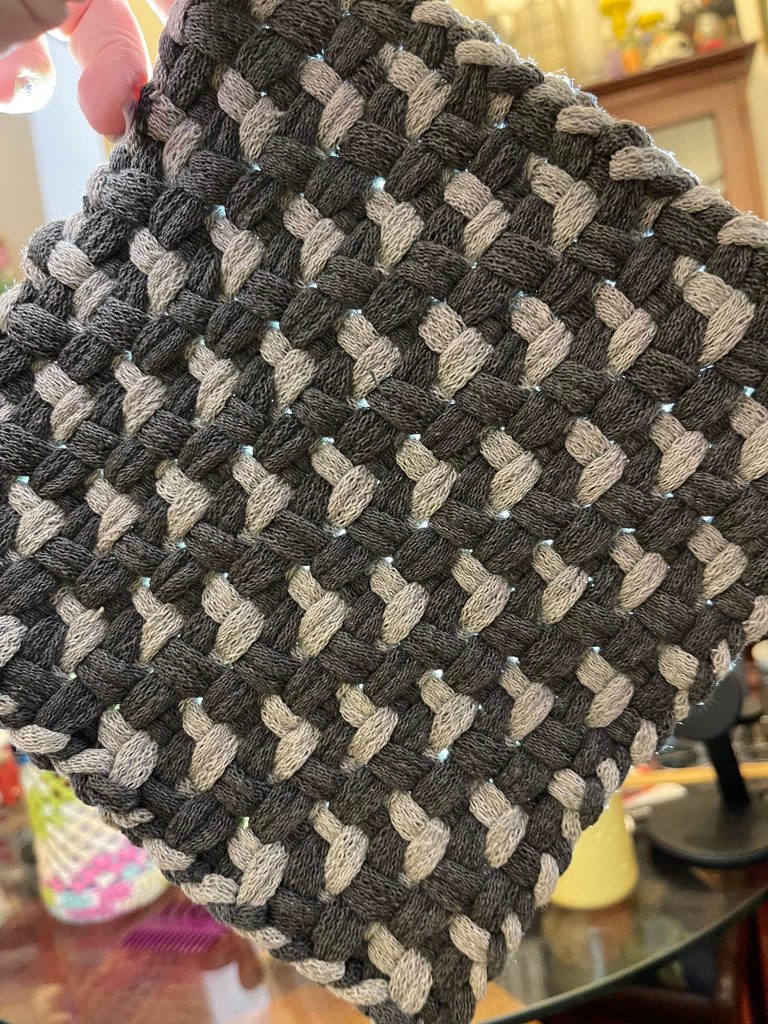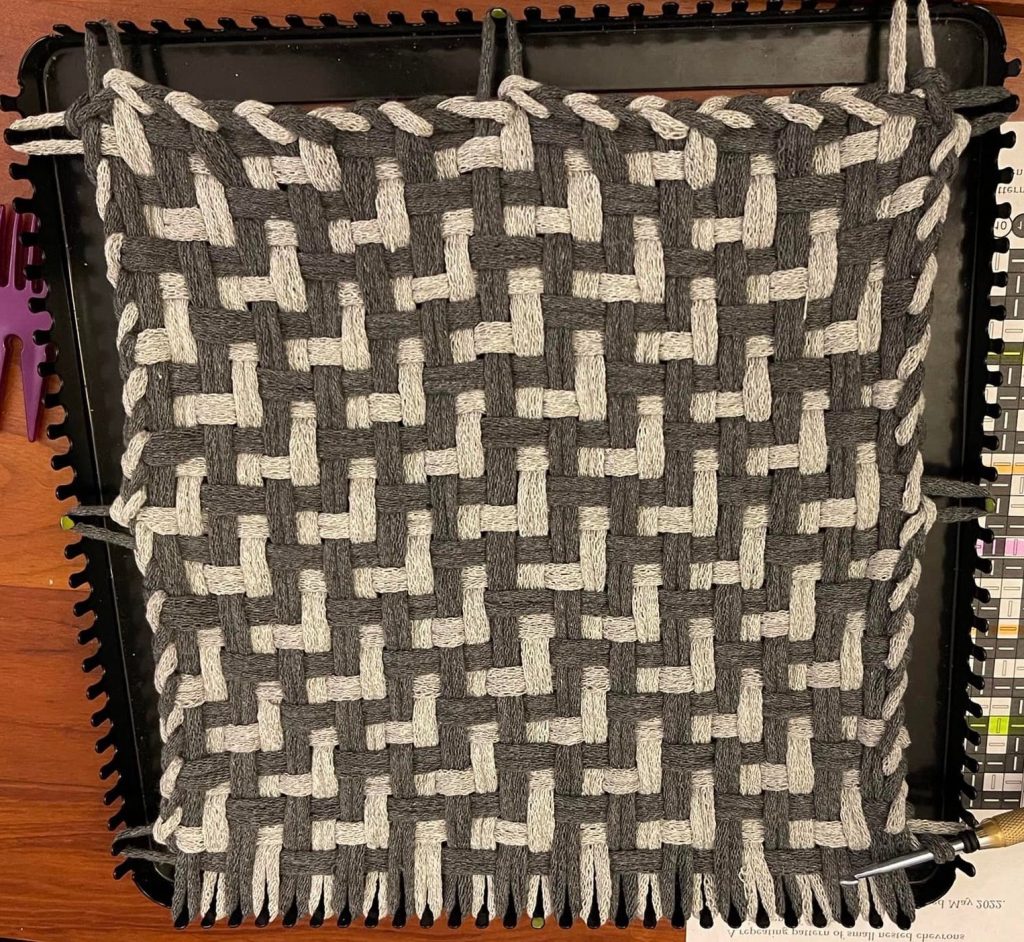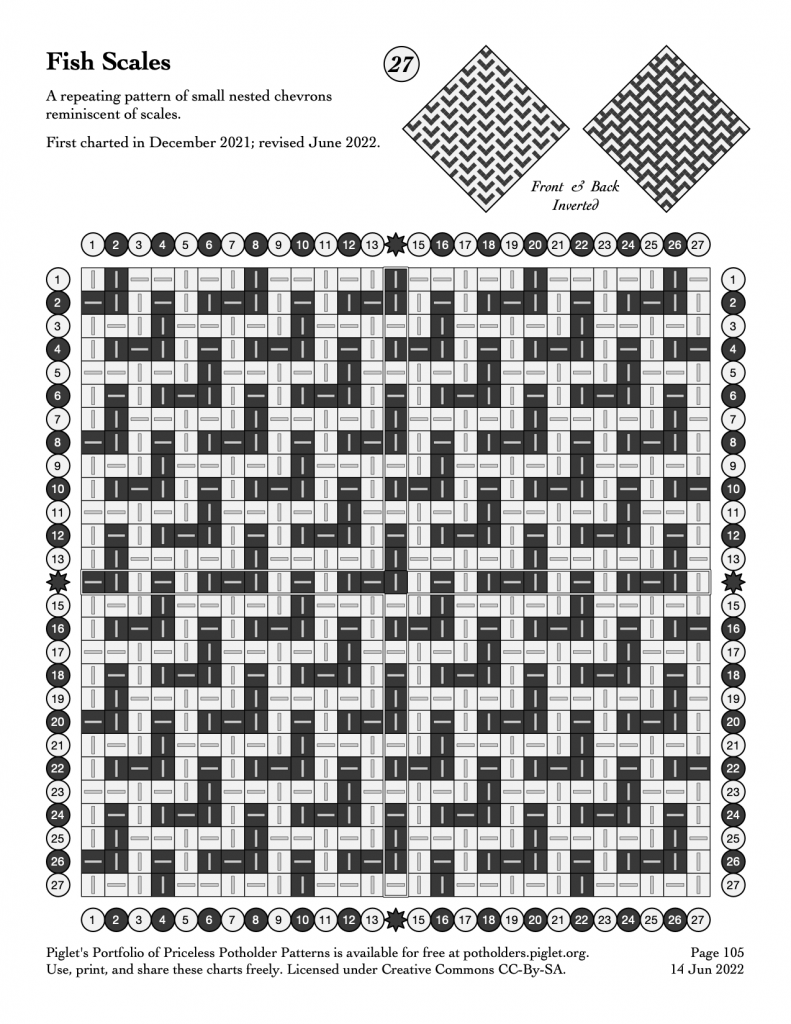In the last couple of months, there’s been a boom of new woven-loop potholder designs created using double-weave techniques.
While I’m sure there are many ways of making these charts, I’ve stumbled onto one simple technique which I’m currently using to make double-weave charts, and wanted to share it here.
Start with any of the templates below, which form simple double-weave structures with a light layer in front and a dark layer in back. (The first has 14×14 white loops and 13×13 dark; the other two are all 14×13 or 13×14.)
Then go through and in any circled space you can bring the back layer to the front by coloring it dark and flipping the weave direction in that spot from | to —, or from — to |.
Then try weaving it to see how it turns out when you take it off the loom!
There might be a few surprises, but so far this technique has been pretty reliable… give it a try and let us know how it works for you.
And if you have a different technique for creating double-weave designs that you’re willing to share, I’d love to hear about it!
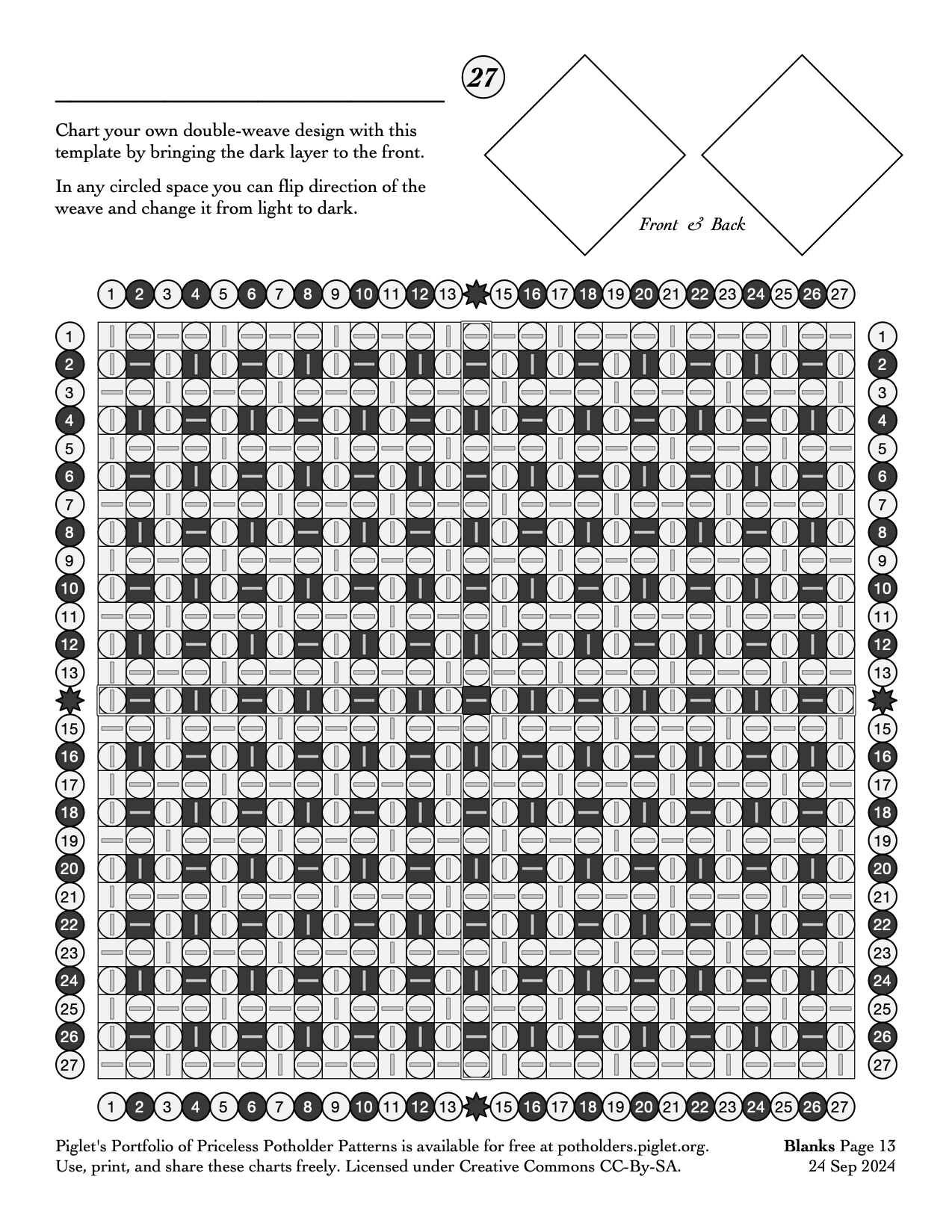
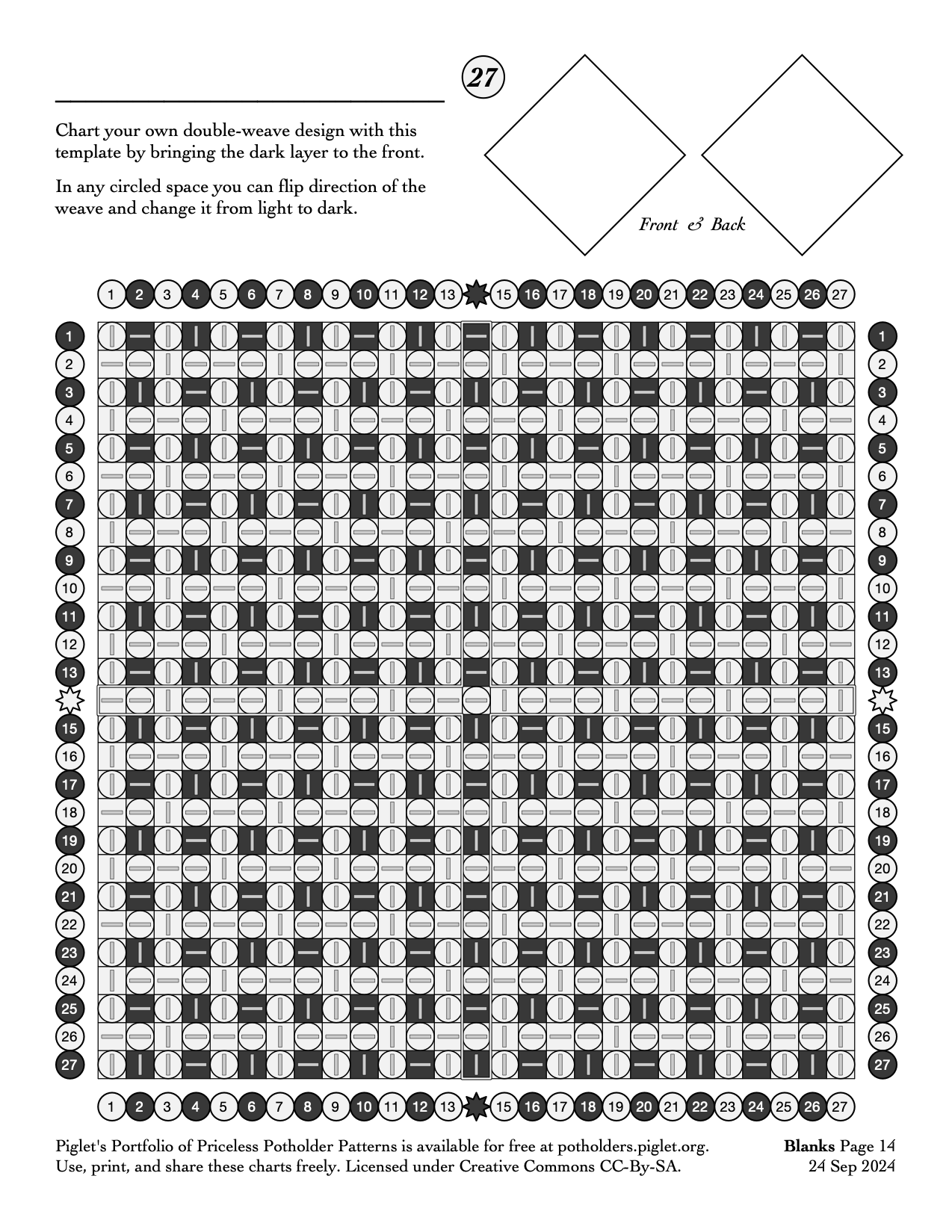
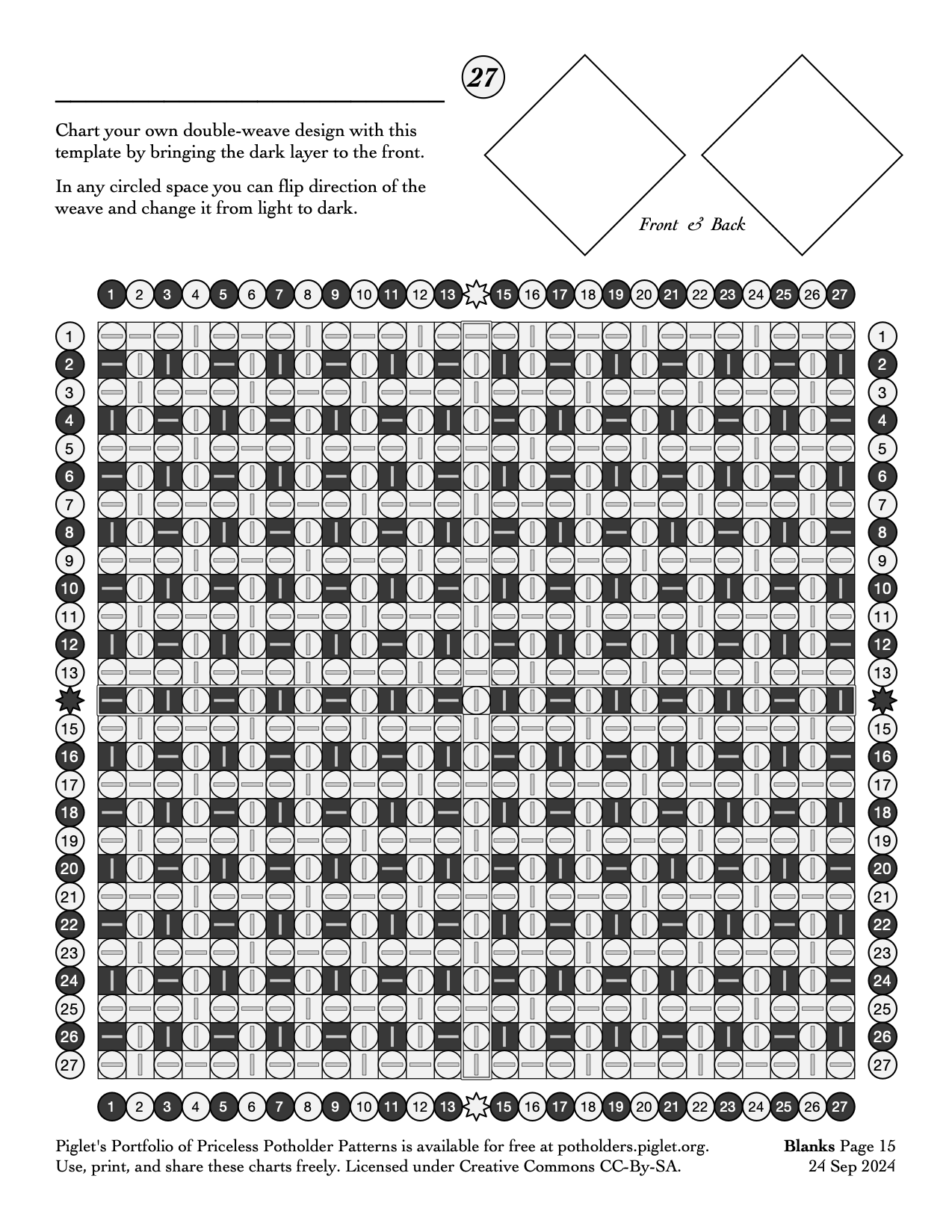
P.S. In case the above notes are not sufficiently clear, here’s a comment I posted to a recent Facebook thread, along with the quick sketch that illustrates using this template to make a chart with three black blocks on a white field:
if you leave the template exactly as I uploaded it, you’ll get a potholder that is light on the front and dark on the back. But if you go through and pick some specific areas, and for each circle in that area you color it black and change the direction of the weave marking, you now have a new chart that will come off the loom as white with some black areas.
In this version, the white areas serve as the background and the black areas are the figure drawn on top of it — but of course when you are weaving it you could switch the colors around and use dark colors for the white spaces on the chart and vice versa.
In the example below, I’ve colored in some of the circles and also (very messily) tried to indicate that the weave in those circles should change from over to under or vice versa — and when woven you should get a white potholder with three black spots on it — and the back will be black with three white spots.
